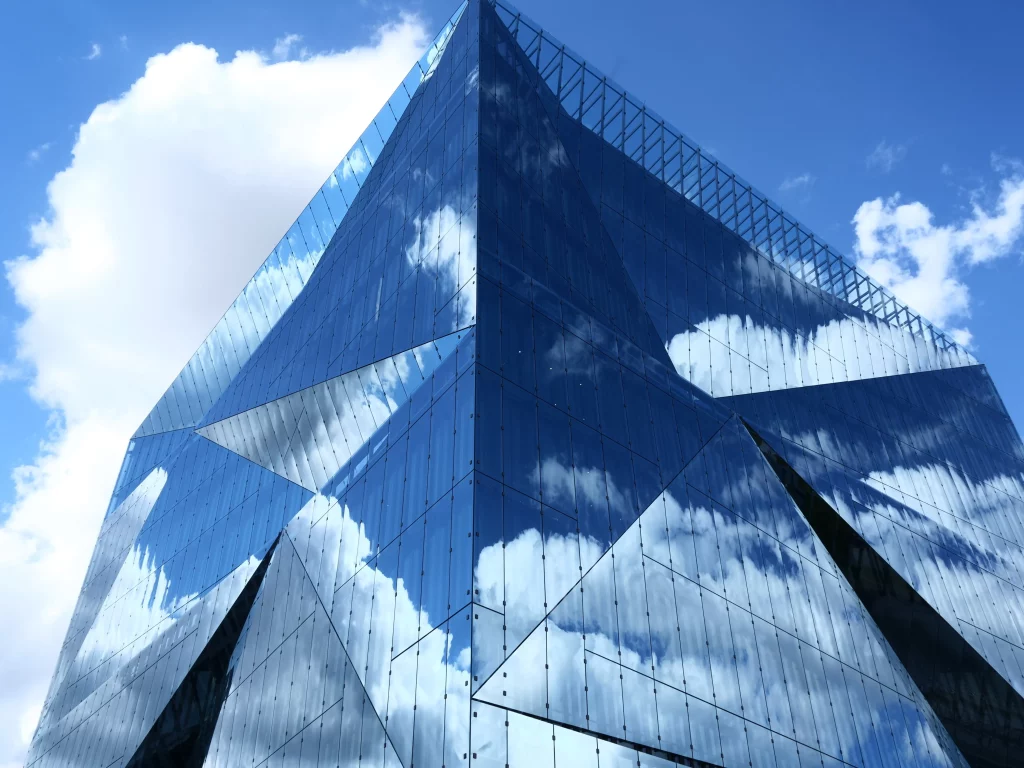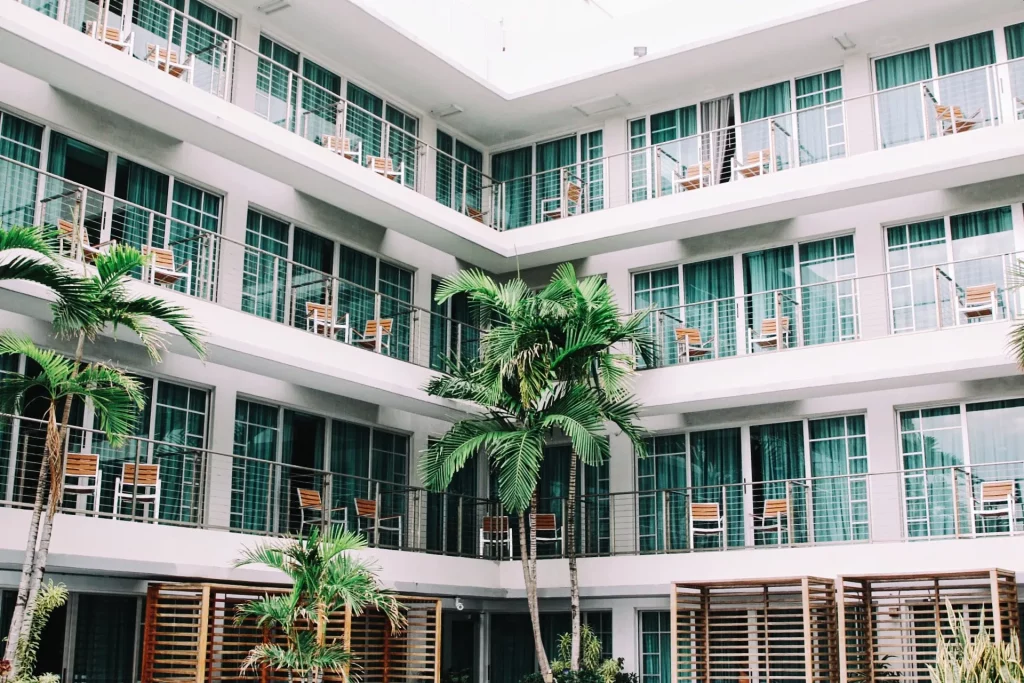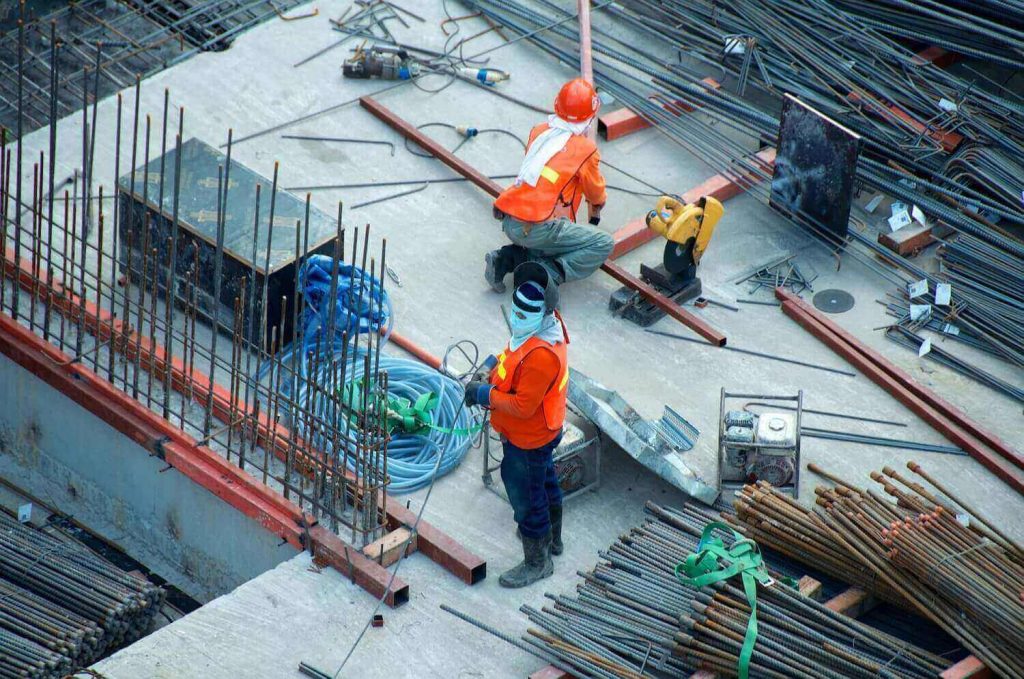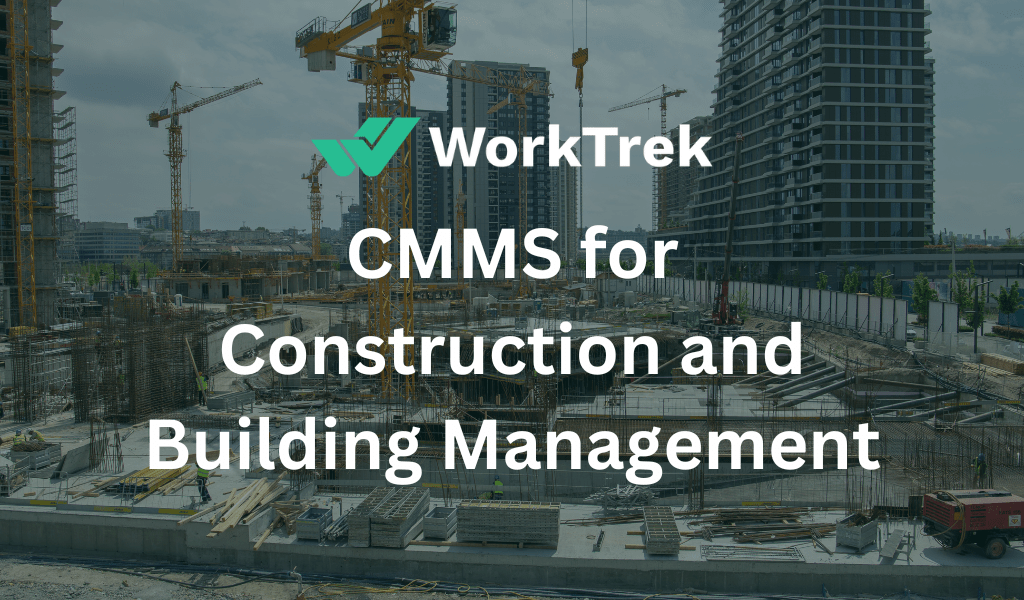Get a Free WorkTrek Demo
Let's show you how WorkTrek can help you optimize your maintenance operation.
Try for freeIntroduction
CMMS in construction and building management is software designed to centralize and automate maintenance operations. It helps manage assets, schedule preventive maintenance, handle work orders, track inventory, and ensure regulatory compliance. CMMS enhances efficiency, reduces downtime, and contributes to the overall reliability and longevity of construction projects and building facilities.
What is a CMMS?
The acronym CMMS stands for Computerized Maintenance Management System. CMMS software package was designed to manage maintenance practices globally, on a strategic, financial, and operational level. It is today the essential software of the industrial sector. Much more than simple computer programming, it is an assistant for maintenance teams, the cornerstone of industrial efficiency.
Read also 20 benefit of CMMS

Construction and Building Management
Construction and building management involves the planning, coordination, and control of construction projects from conception to completion. These processes are critical for ensuring that a construction project is completed on time, within budget, and to the satisfaction of all stakeholders. Here are some key aspects of construction and building management:
Project Planning
- Scope Definition: Clearly defining the project’s objectives, requirements, and deliverables.
- Budgeting: Estimating costs and creating a budget for the project.
- Scheduling: Developing a timeline for the project, including milestones and deadlines.
Design Management
- Architectural Design: Collaborating with architects to create detailed plans and specifications.
- Engineering Design: Coordinating with engineers for structural, mechanical, and electrical design.
Construction Execution
- Site Management: Overseeing day-to-day activities on the construction site.
- Quality Control: Ensuring that the construction meets specified standards and regulations.
- Safety Management: Implementing and enforcing safety protocols to protect workers and the public.
Cost Control
- Monitoring Expenses: Tracking costs throughout the project and making adjustments as necessary.
- Change Management: Handling changes to the project scope and assessing their impact on cost and schedule.
Risk Management
- Identifying Risks: Anticipating potential issues that could impact the project.
- Mitigation Strategies: Developing plans to minimize or address potential risks.
Construction and building management professionals, such as project managers and construction managers, play a crucial role in coordinating these various aspects to ensure a successful and efficient construction process. They must possess a combination of technical knowledge, project management skills, and the ability to collaborate with diverse teams.

What is CMMS in Construction and Building Management?
In the context of construction and building management, a CMMS is a software solution designed to streamline and automate maintenance operations. Here are some key CMMS features and functions in construction and building management:
Asset Management – helps organizations track and manage all their assets, including equipment, machinery, and facilities. It provides detailed information about each asset, including its maintenance history, specifications, and location.
Preventive Maintenance – allows for the scheduling and management of routine maintenance tasks to prevent equipment failures and reduce downtime. It automates the generation of preventive maintenance schedules based on time, usage, or condition.
Work Order Management – Work orders are created, assigned, and tracked within the CMMS. This includes both routine maintenance tasks and reactive maintenance in response to reported issues. Work orders help ensure that maintenance activities are organized and executed efficiently.
Inventory Management – helps organizations manage spare parts and inventory related to maintenance activities. It ensures that necessary supplies are available, reducing delays in maintenance tasks.
Document Management – serves as a centralized repository for manuals, schematics, and other documentation related to equipment and facilities. This makes information easily accessible to maintenance personnel.
Downtime Reduction – Through preventive maintenance and real-time monitoring of equipment health, CMMS helps reduce unexpected downtime by identifying and addressing potential issues before they become critical.
Mobile Accessibility – Many CMMS solutions offer mobile applications, allowing maintenance teams to access information, create work orders, and update asset records from the field, promoting flexibility and responsiveness.
Regulatory Compliance – CMMS assists in maintaining records required for regulatory compliance. It ensures that maintenance activities adhere to industry standards and regulations.

Improve your building management with WorkTrek CMMS!
Book a WorkTrek demo to see how a CMMS can help you.
Try for freeWhat are the Challenges in Construction and Building Management?
Construction and building management face a variety of challenges, ranging from planning and execution issues to external factors. Here are some common challenges in construction and building management:
Regulatory Compliance
- Cause: Evolving building codes, environmental regulations, and safety standards.
- Impact: Delays, increased costs for compliance, and potential legal issues.
Risk Management
- Cause: Unforeseen events like natural disasters, economic downturns, or geopolitical issues.
- Impact: Project disruptions, increased costs, and safety concerns.
Communication Breakdown
- Cause: Ineffective communication among project teams, stakeholders, and contractors.
- Impact: Misunderstandings, errors in execution, and delays in decision-making.
Labor Shortages
- Cause: Shortages of skilled labor in the construction industry.
- Impact: Delays in project timelines, increased labor costs, and potential compromises in work quality.
Material Shortages and Price Fluctuations
- Cause: Global supply chain disruptions, market demand, or geopolitical factors.
- Impact: Increased costs, delays in procurement, and challenges in maintaining project schedules.
Environmental and Sustainability Concerns
- Cause: Increasing emphasis on sustainable construction practices and green building standards.
- Impact: Additional planning and compliance requirements, potential increased costs.
Addressing these challenges requires a combination of effective project management, clear communication, risk mitigation strategies, and the ability to adapt to changing circumstances.

How CMMS Can Help to Avoid Challenges in Construction and Building Management?
Computerized Maintenance Management Systems (CMMS) can play a crucial role in improving efficiency, reducing costs, and enhancing overall management in construction and building operations. Here are several ways in which CMMS can benefit construction and building management:
Tracking and Maintenance: CMMS can help manage and track various assets, including equipment, machinery, and facilities, ensuring they are properly maintained and serviced.
Scheduled Maintenance: CMMS allows for the scheduling of routine maintenance tasks, reducing the likelihood of unexpected breakdowns and extending the life of equipment.
Efficient Workflows: CMMS streamlines the creation, assignment, and tracking of work orders, ensuring that maintenance tasks are efficiently managed and completed.
Stock Control: CMMS helps in managing spare parts and inventory, ensuring that the necessary supplies are available when needed and preventing unnecessary downtime.
Expense Monitoring: CMMS can track maintenance costs, helping in budgeting and identifying areas for potential cost savings.
Centralized Information: CMMS serves as a centralized repository for manuals, schematics, and other documentation, making information easily accessible for maintenance teams.
Record Keeping: CMMS assists in maintaining records required for regulatory compliance, ensuring that the building or construction site adheres to industry standards and regulations.
Proactive Maintenance: With preventive maintenance schedules and real-time monitoring, CMMS helps reduce unexpected downtime by identifying and addressing potential issues before they escalate.
Remote Management: Many modern CMMS solutions offer mobile applications, enabling maintenance teams to access information, create work orders, and track progress remotely, enhancing flexibility.

Conclusion
By incorporating CMMS into construction and building management practices, organizations can optimize maintenance processes, reduce operational costs, and improve the overall reliability and lifespan of assets. The proactive approach facilitated by CMMS contributes to a more streamlined and efficient construction and building management lifecycle.









